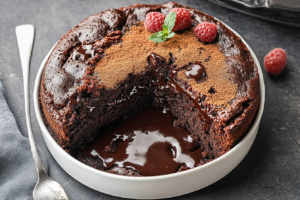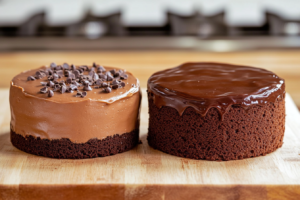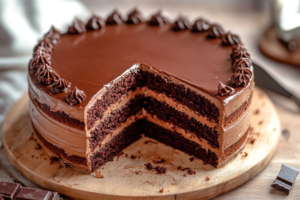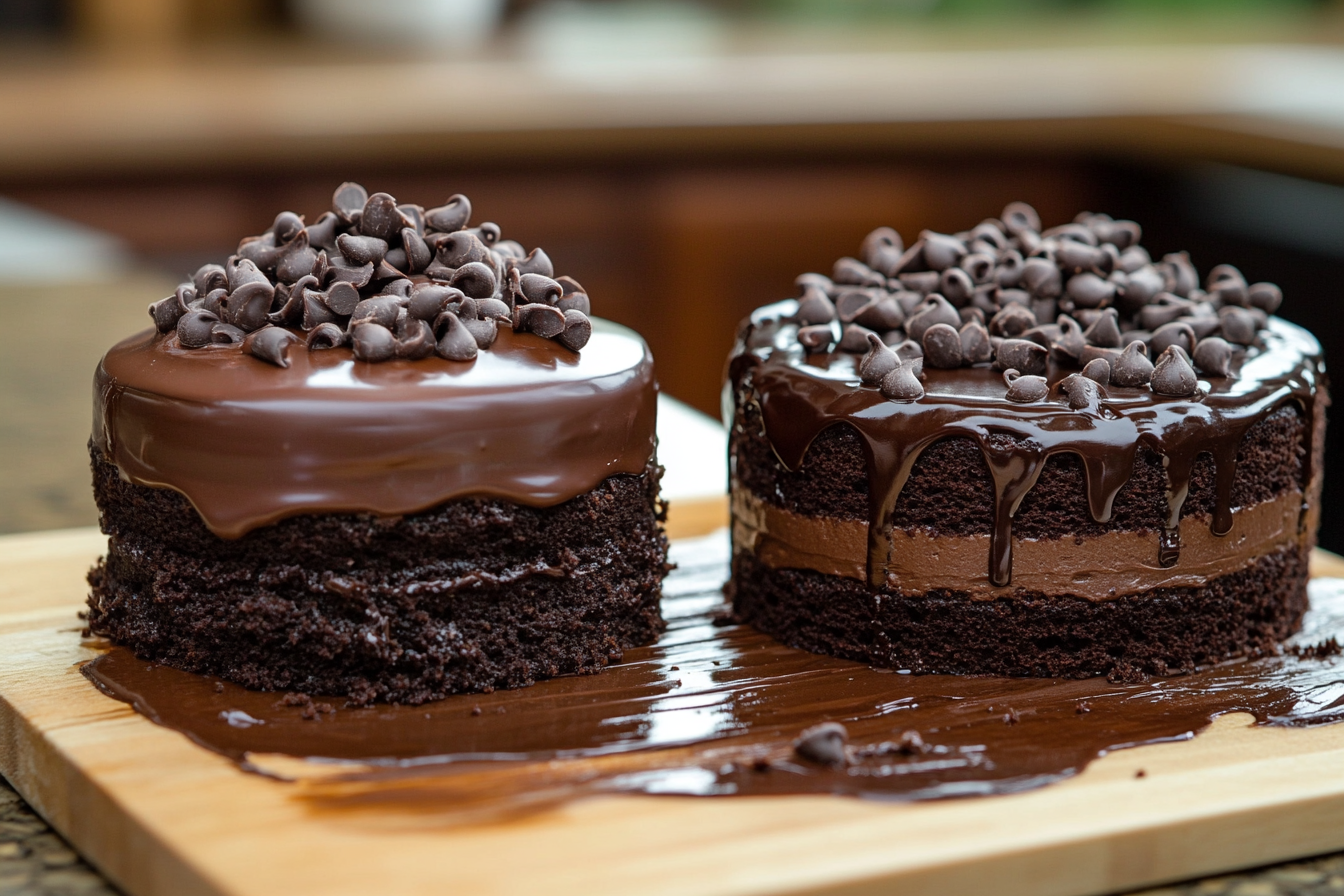What’s the Difference Between Cake and Pudding Cake?
Desserts come in various forms, but cakes remain timeless and versatile. Whether it’s a birthday celebration or a wedding feast, cakes take center stage with their structure, flavor, and decoration. However, not all cakes fit the traditional mold. Pudding cakes offer a different experience by blending the fluffiness of cake with the creaminess of pudding.
So, what is the difference between cake and pudding cake? While these two desserts share similar ingredients, their baking processes, textures, and final results set them apart. This guide will explore the unique characteristics of each dessert and help you understand what makes them different.
Traditional Cake: A Classic Dessert
What Defines a Traditional Cake?
A traditional cake uses simple ingredients like flour, sugar, eggs, butter, and leavening agents. The texture can range from light and fluffy to rich and dense, depending on the recipe. The texture can range from light and fluffy to rich and dense, depending on the recipe. You can explore more about the baking science basics for a deeper understanding of how ingredients work together.. Most cakes bake until fully set, which creates a consistent crumb and structure. These cakes are perfect for layering, frosting, or decorating.
Popular types of traditional cakes include:
- Butter Cakes: These cakes rely on butter or oil for richness and a moist texture.
- Sponge Cakes: Light and airy, sponge cakes use whipped eggs to create a fluffy texture.
- Chiffon Cakes: A combination of sponge and butter cakes, chiffon cakes offer both lightness and richness.
For further cake inspiration, you may want to try this Decadent Homemade Chocolate Cake recipe, which showcases the traditional cake-making techniques at their best.
Key Characteristics of Traditional Cakes
The consistent crumb and texture make traditional cakes versatile. Whether you’re making a layer cake or a single-tier dessert, the structure remains uniform from top to bottom. This consistency allows for easy frosting, decoration, and even the inclusion of fillings.
- Texture: Traditional cakes have a consistent crumb that can be either fluffy or dense.
- Leavening: The use of baking powder or soda ensures that the cake rises evenly.
- Moisture: While moist, traditional cakes do not feature a liquid or pudding layer.
- Baking Process: Cakes bake fully until they form a solid structure, making them ideal for decoration and filling.
For a creative twist on cake baking, you might want to explore Chocolate Pudding Cake, a perfect hybrid dessert for those who enjoy rich, moist textures.

What Is a Pudding Cake?
Pudding cakes provide a unique twist on the traditional cake by combining two distinct layers—fluffy cake on top and a gooey pudding at the bottom. The secret lies in the baking process, where the liquid settles to the bottom of the pan, creating a sauce-like consistency. Meanwhile, the top layer bakes into a soft, airy cake.
Why Pudding Cakes Stand Out
Pudding cakes bring together the best of both worlds. The cake portion offers the familiar texture, while the pudding layer adds a rich, creamy component. The contrast between these two layers makes pudding cakes an indulgent dessert that feels light yet decadent.
- Two-Layer Texture: The top becomes a light cake, while the bottom transforms into a gooey pudding.
- Leavening: The cake rises due to the action of baking powder or soda, but the liquid settles into a sauce.
- Moisture: The pudding layer provides extra moisture, making the dessert richer than traditional cakes.
- Baking Process: Pudding cakes involve pouring liquid over the batter before baking, which results in the two distinct layers.
How Texture Differs: Cake vs. Pudding Cake
Texture plays a major role in distinguishing cake from pudding cake. Texture plays a major role in distinguishing cake from pudding cake. The cake texture and chemistry provide further scientific insight into what creates these differences.Traditional cakes feature a uniform structure throughout, while pudding cakes intentionally create two separate textures—an airy top and a gooey bottom.
For another cake experience, consider trying Carrot Zucchini Muffins, which offer a healthy twist on traditional cakes.
Texture in Traditional Cakes
The design of Traditional cakes are designed for consistency. From top to bottom, the crumb remains the same, whether it’s light and fluffy like a sponge cake or dense like a pound cake. This uniformity allows traditional cakes to hold their shape well and makes them easy to decorate or layer with fillings.
- Uniform Texture: Traditional cakes feature a consistent crumb, regardless of the cake type.
- Firm Structure: Cakes maintain their form, making them ideal for frosting and decoration.
Texture in Pudding Cakes
In contrast, pudding cakes present two distinct layers: a fluffy cake on top and a rich, creamy pudding on the bottom. The batter separates during baking, allowing the liquid to settle and form a pudding while the cake rises to the top. The combination of textures creates a unique dessert experience.
- Two-Layered Texture: Pudding cakes form a soft cake on top and a gooey layer at the bottom.
- Extra Moisture: The pudding layer adds moisture and richness, making each bite softer and creamier.
Ingredients: Cake vs. Pudding Cake
Both traditional cakes and pudding cakes share similar core ingredients—flour, sugar, eggs—but they differ in how these ingredients are used. While a traditional cake aims for a consistent structure, a pudding cake includes extra liquid to create its signature pudding layer.
Ingredients in Traditional Cakes
Traditional cakes rely on a simple set of ingredients, which are combined to form a uniform batter that bakes into a set structure.
- Flour: Provides structure and stability to the cake.
- Sugar: Sweetens the batter and aids in browning.
- Butter or Oil: Adds richness and moisture to the cake.
- Eggs: Help bind the ingredients and add stability.
- Leavening Agents: Baking powder or soda ensures the cake rises evenly.
- Liquid (Milk or Water): Adds moisture and helps create a smooth, consistent batter.
Ingredients in Pudding Cakes
Pudding cakes use the same basic ingredients as traditional cakes but add an extra liquid component that forms the pudding layer. This additional liquid is the key to achieving the two-layer structure.
- Flour: Provides structure to the cake layer.
- Sugar: Sweetens both the cake and pudding layers.
- Butter: Adds moisture and flavor to the batter.
- Eggs: Contribute to the cake’s fluffiness and the pudding’s creaminess.
- Leavening Agents: Help the cake rise while the liquid settles to form the pudding.
- Extra Liquid: Water, milk, or juice is added to the batter to create the pudding layer at the bottom.
The inclusion of extra liquid sets pudding cakes apart from traditional cakes, resulting in a richer, more indulgent texture.

Baking Techniques: Cake vs. Pudding Cake
While both traditional cakes and pudding cakes require baking, the processes differ significantly due to the textures and ingredients involved. Understanding these differences will help you choose the right dessert for your occasion.
Baking a Traditional Cake
Traditional cakes are baked to achieve a uniform crumb. The batter is mixed until smooth, poured into a prepared pan, and baked until fully set. To check for doneness, a toothpick is usually inserted into the center of the cake—if it comes out clean, the cake is done. The even structure of a traditional cake allows for easy slicing, layering, and decorating.
- Oven Temperature: Traditional cakes are usually baked at 350°F (175°C).
- Baking Time: Most traditional cakes require 30 to 50 minutes of baking, depending on the recipe and cake size.
- Doneness Check: A toothpick should come out clean when inserted into the center, signaling that the cake has fully baked.
Baking a Pudding Cake
Pudding cakes involve a more complex process. After the batter is poured into the baking dish, a layer of liquid (such as water, milk, or juice) is poured over the top. As the cake bakes, the liquid sinks to the bottom, forming the pudding layer, while the top rises into a light, fluffy cake. The separation of layers occurs naturally during the baking process.
- Oven Temperature: Pudding cakes typically bake at a slightly lower temperature—around 325°F (160°C)—to ensure even cooking.
- Baking Time: Due to the liquid layer, pudding cakes usually take longer to bake, often between 45 and 60 minutes.
- Doneness Check: The top should be set, but the bottom remains gooey, indicating that the pudding layer has formed properly.
Flavor and Serving Styles: Cake vs. Pudding Cake
Beyond texture and ingredients, the flavor and serving styles of traditional cakes and pudding cakes also differ. Each dessert offers its own unique experience based on its preparation and presentation.
Flavor and Serving Style of Traditional Cakes
Traditional cakes provide a wide range of flavors, from classic vanilla and chocolate to citrus and spice. These cakes are usually served at room temperature and can be frosted, filled, or topped with a variety of ingredients like buttercream, ganache, or fruit compote. Cakes are typically sliced and served on plates, making them perfect for formal events and special occasions.
- Flavor Variety: Traditional cakes come in many flavors, such as chocolate, vanilla, lemon, and red velvet.
- Serving Style: Cakes are sliced and served with utensils, often plated with toppings like whipped cream or ice cream.
Flavor and Serving Style of Pudding Cakes
Pudding cakes are best enjoyed warm to highlight the contrast between the fluffy cake and the creamy pudding layer. These cakes are often served directly from the baking dish and paired with whipped cream or ice cream for added richness. The flavors tend to be comforting and indulgent, with popular options like chocolate, caramel, and lemon.
- Rich and Creamy Flavors: Pudding cakes often feature flavors such as chocolate, lemon, and caramel.
- Warm Serving Style: Pudding cakes are typically served warm and scooped directly from the dish, making them perfect for casual family gatherings or cozy dinners.
Misconceptions About Cake and Pudding Cake
Many people confuse pudding cakes with other popular desserts, such as molten lava cakes or custards. However, pudding cakes are distinct in their dual-layer structure and self-saucing nature, which sets them apart from other gooey or creamy desserts.
- Molten Lava Cakes: While molten lava cakes feature a liquid center, they do not separate into two distinct layers like pudding cakes.
- Custards: Custards offer a smooth, creamy texture throughout, while pudding cakes have both a cake and pudding layer.
- Flan: This caramel-topped dessert resembles pudding cakes in creaminess but lacks the baked cake layer on top.

FAQs:
What’s the biggest difference between traditional cake and pudding cake?
The main difference lies in texture. Traditional cakes have a uniform texture throughout, while pudding cakes feature a fluffy cake on top and a gooey, pudding-like layer at the bottom.
Can I use the same recipe for both types of cakes?
No, pudding cakes require additional liquid to form the pudding layer, which isn’t part of traditional cake recipes.
Which dessert is easier to make: traditional cake or pudding cake?
Both are simple to prepare, but pudding cakes involve an extra step of pouring liquid over the batter before baking.
How are pudding cakes typically served?
Pudding cakes are best served warm, usually scooped out of the dish with a spoon. They pair well with whipped cream or ice cream.
Are pudding cakes moister than regular cakes?
Yes, the pudding layer makes pudding cakes significantly moister and richer than traditional cakes.
Conclusion: Which Dessert Should You Choose?
Both traditional cakes and pudding cakes offer unique flavors, textures, and experiences. Traditional cakes suit special occasions where elegant presentation and customization are key. On the other hand, pudding cakes are perfect for casual gatherings or family dinners, offering warmth, richness, and a comforting texture.
If you need a versatile, customizable cake that holds its shape for decoration, choose a traditional cake. However, if you’re craving something warm, gooey, and indulgent, pudding cake delivers a satisfying experience.
